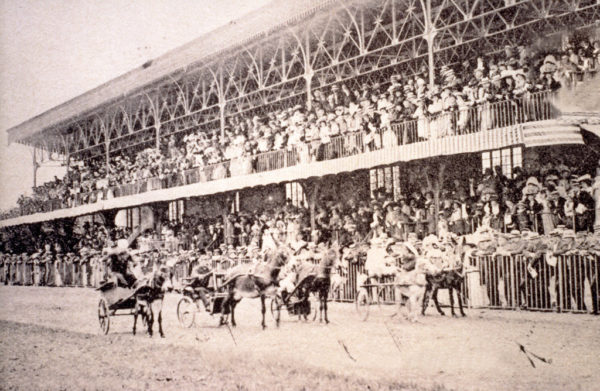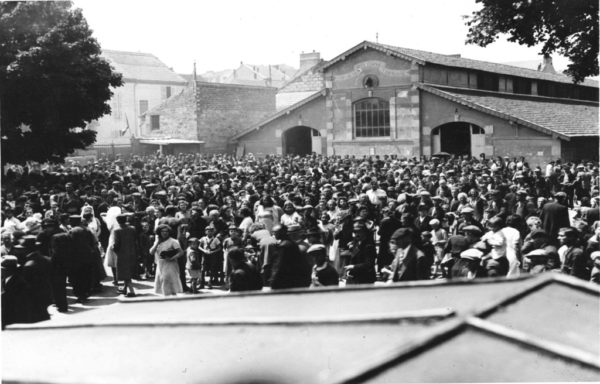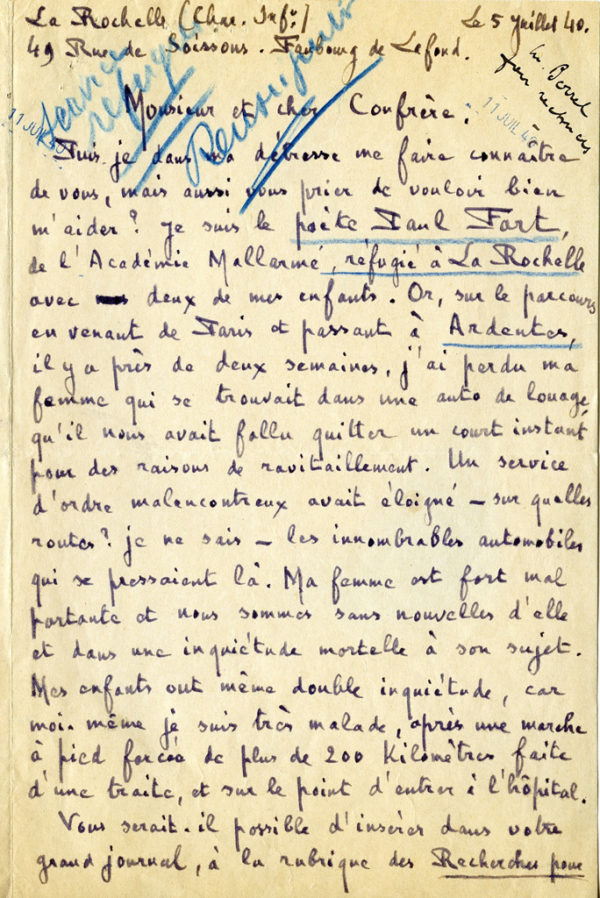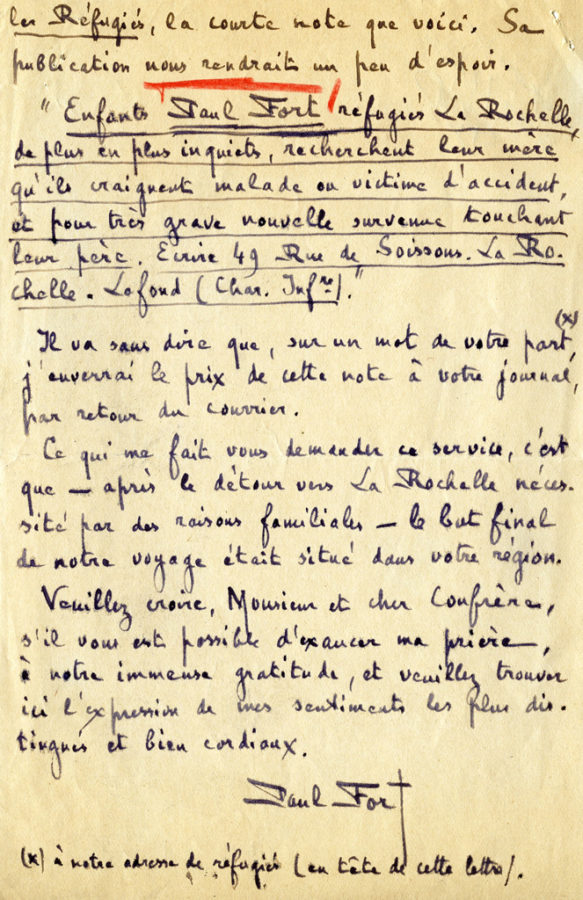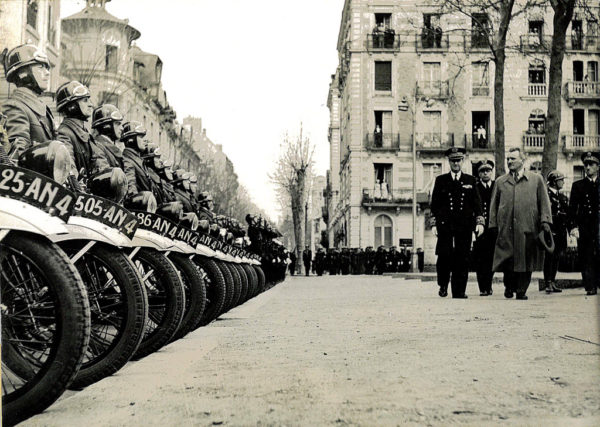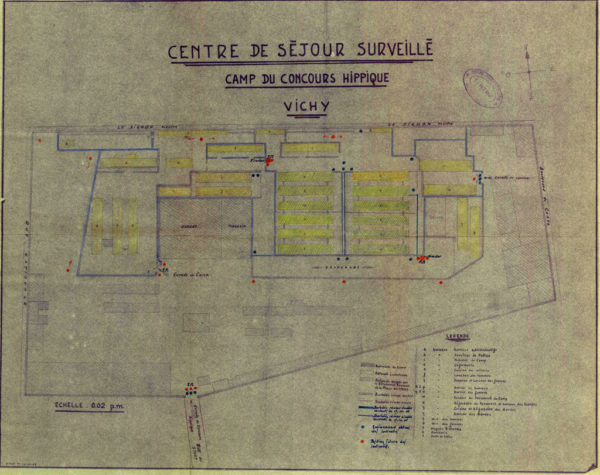The Concours hippique
- The French State - The everyday life - The epuration
On 10 May 1940 Hitler’s troops invaded Belgium. Four days later they were in France. The German advance triggered an unprecedented exodus of refugees fleeing south. The towns and cities where they sought refuge were overwhelmed. In Vichy, the Concours hippique, the town’s equestrian stadium, was transformed into a reception centre. An enormous canteen was created and after only a few weeks around 800,000 meals had been served. In addition to the reception centre at the Concours hippique, the town council created an orphanage, a maternity service and several clinics housed in requisitioned buildings to cater to refugees’ needs.
The Concours hippique was then requisitioned by Pétain’s paramilitary groups, the GMR, created in the spring 1941. Following the armistice in June 1940, the army and antiriot police were drastically reduced in number. The GMR were created to maintain public order. They were initially deployed in the southern zone then throughout France late in 1942. In Vichy, they were stationed in the Concours hippique.
After Vichy’s liberation, the Concours hippique became an internment camp for several hundred presumed collaborators. To make the camp more functional and secure, the site was enlarged and altered and two watchtowers were built.
The camp’s population varied greatly, ranging from ordinary people to writers such as Jacques Chevalier, generals such as Commandant Féat, and members of the deposed government, including former ministers such as Xavier Vallat. The prisoners were housed in fourteen sheds, ten for men and four for women. The camp was dismantled late in the spring of 1945. According to the prefect, their proximity to the local population helped create an unhealthy and potentially dangerous atmosphere in the vicinity of the Concours hippique.
106 Rue Jean Jaurès
03200 Vichy
